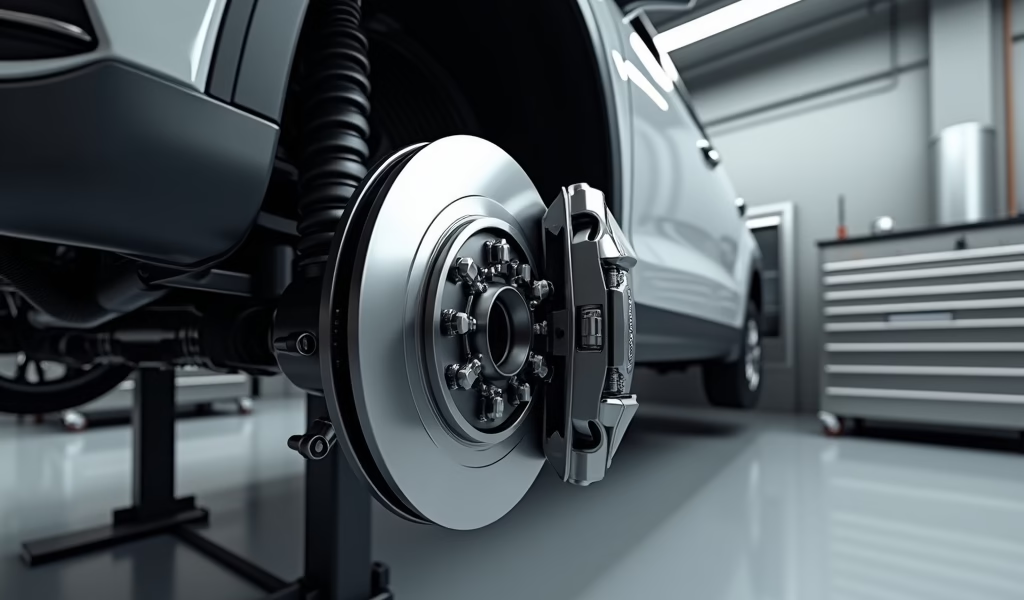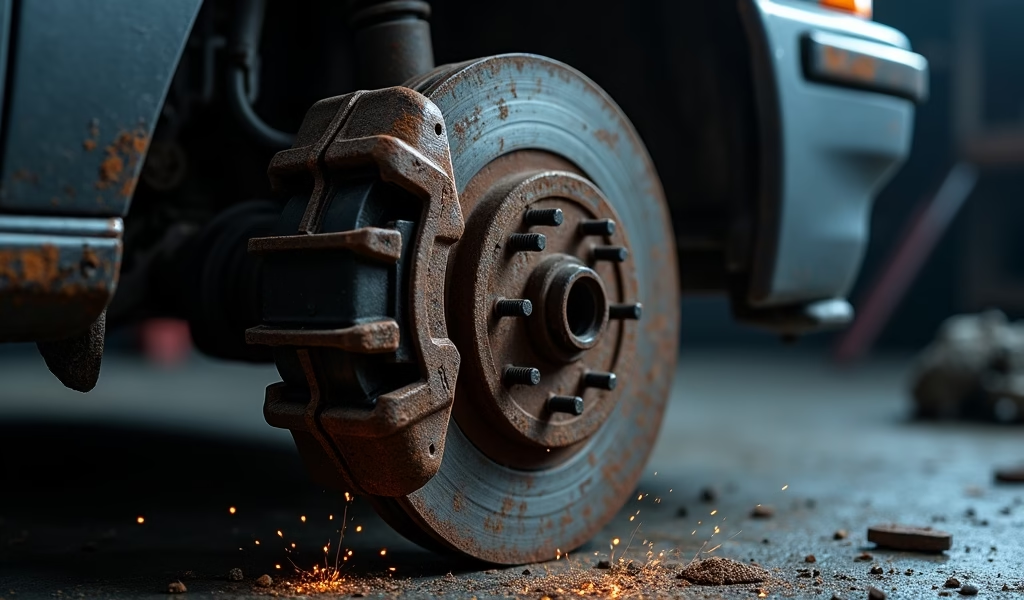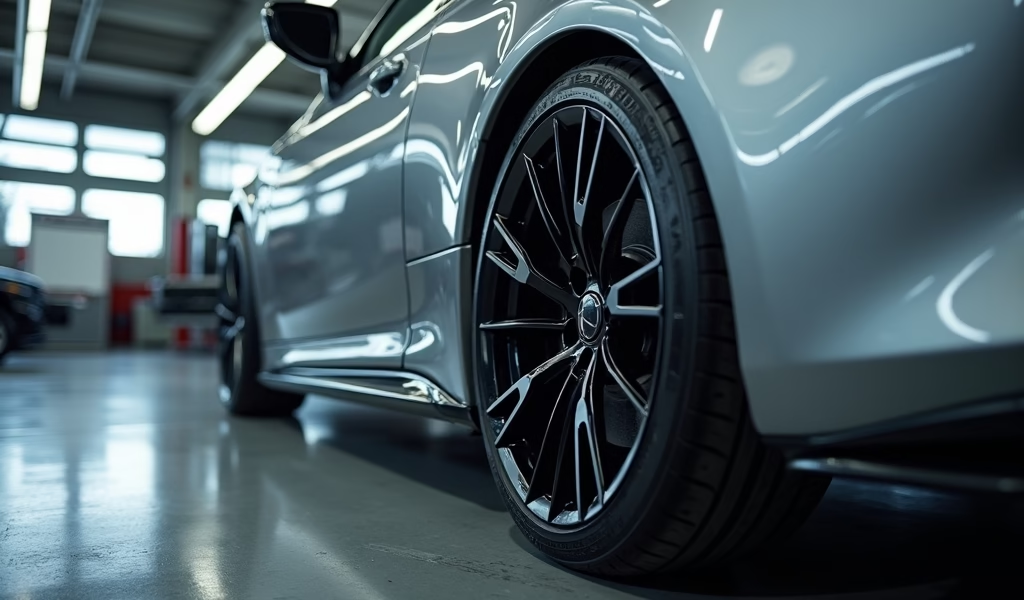Overview
This article breaks down brake service costs, explaining that prices range from $150-$800 per axle depending on vehicle type, component quality, and whether you need pads, rotors, calipers, or fluid services. It provides practical advice for saving money while maintaining safety, emphasizing that addressing brake issues early prevents more expensive repairs and that proper maintenance is essential for both financial and personal protection.
Table of Contents
- Understanding Brake Costs: What You’re Really Paying For
- Brake Pad Replacement: The Most Common Brake Service
- Rotor Replacement: When and Why You Need New Discs
- Brake Caliper Costs: The Pricier Component
- Brake Fluid Service: The Often Forgotten Maintenance
- DIY vs. Professional Brake Service: Counting the Real Costs
- Saving Money on Brake Services Without Sacrificing Safety
- Warning Signs You Need Brake Service
- Conclusion: Making Smart Decisions About Brake Costs
- Frequently Asked Questions
Understanding Brake Costs: What You’re Really Paying For
When it comes to how much do brakes cost, the answer isn’t as straightforward as you might hope. As a mechanic with over 15 years of experience, I’ve seen customers like Sarah from Portland who came in expecting a simple $150 brake job only to discover she needed a complete brake system overhaul costing nearly $800. The confusion and surprise on her face is something I see all too often.
Brake service costs vary widely depending on several critical factors. Your vehicle’s make and model play a significant role – luxury vehicles like BMWs or Mercedes typically require more expensive components than a Honda or Toyota. For instance, my customer Tom’s BMW 5-series brake pads cost nearly twice what Maria paid for her Honda Civic.
The type of brake components you choose also significantly impacts the final price. Think of brakes like shoes – you can buy the budget option, the mid-range, or the premium version. The average brake job in the United States ranges from $150 to $800 per axle, but understanding what goes into that cost helps you make informed decisions.
Let’s break down the typical costs you might encounter when servicing your vehicle’s braking system, starting with the most common service – brake pad replacement.
Brake Pad Replacement: The Most Common Brake Service
Brake pad replacement represents the most frequent brake service most vehicle owners will need. These friction materials wear down by design – they sacrifice themselves to stop your vehicle safely. When discussing brake service costs with my customers, I often use the example of Alex, who drives a Toyota Camry in stop-and-go city traffic and needs new pads about every 30,000 miles, while his brother Michael’s identical car lasts 60,000 miles with mostly highway driving.
The typical cost breakdown for brake pad replacement looks like this:
- Economy/Organic brake pads: $30-$50 per axle
- Semi-metallic pads (mid-range): $50-$80 per axle
- Ceramic brake pads (premium): $80-$130 per axle
- Labor costs: $80-$120 per hour (typically 1-2 hours per axle)
Materials matter tremendously in brake pad performance. Economy pads might save you money today but could cost more in the long run if they wear faster or produce more dust that damages other components. When Jennifer brought in her Subaru Outback complaining of excessive noise after a budget brake job elsewhere, we discovered the low-quality pads were already showing signs of uneven wear after just 8,000 miles.
Most vehicles need brake service on the front axle more frequently than the rear because front brakes handle about 70% of the stopping power. This is why modern braking systems are designed with this weight distribution in mind.

Rotor Replacement: When and Why You Need New Discs
Rotors (also called discs) are the metal components that your brake pads clamp against to stop your vehicle. Unlike pads, rotors aren’t designed to be replaced with every brake service, but they do have a finite lifespan. Understanding brakes and rotors cost together gives you the complete picture of what you might spend.
Last month, Carlos brought his Ford F-150 in with vibration during braking. When we inspected his braking system, his rotors had developed deep grooves and had been resurfaced (machined) previously to their minimum thickness. This meant replacement was the only safe option.
Typical costs for brake rotors include:
- Economy rotors: $40-$90 per rotor
- Mid-range rotors: $90-$150 per rotor
- Premium/performance rotors: $150-$300+ per rotor
- Labor for rotor replacement: Usually combined with pad replacement, adding 0.5-1 hour of labor per axle
One important service option is rotor resurfacing (machining), which costs between $15-$40 per rotor. This process removes a thin layer of metal to create a smooth surface again. However, rotors can only be machined to a certain minimum thickness before replacement becomes necessary.
Some shops, like the one where I work, include rotor inspection with every brake service. We’ve found this preventative approach helps customers like Danielle, whose Mini Cooper rotors showed early signs of warping, avoid more expensive repairs and unsafe driving conditions.
Brake Caliper Costs: The Pricier Component
Calipers are the “clamps” that push the brake pads against the rotors when you press your brake pedal. They contain hydraulic pistons and are designed to last much longer than pads or rotors – often the lifetime of the vehicle. However, they can develop issues, especially in regions that use road salt or have high humidity.
When Emma brought her 12-year-old Mazda in with a pulling sensation during braking, we discovered a seized caliper that was causing uneven pad wear and reducing her stopping power. This component failure would have been dangerously unpredictable if left unaddressed.
Caliper replacement costs typically range:
- Economy/remanufactured calipers: $80-$150 each
- Mid-range calipers: $150-$250 each
- OEM/premium calipers: $250-$450+ each
- Labor: Usually 1-1.5 hours per caliper
- Brake fluid: $20-$30 (system will require bleeding after caliper replacement)
Some shops offer caliper rebuilding services, which can be more economical than full replacement. This involves replacing the seals and pistons while reusing the caliper housing. I recommended this option to George for his classic Mustang when he was trying to maintain originality while improving safety.
Complete brake pad and rotor replacement cost with calipers included typically ranges from $300-$800 per axle, depending on your vehicle and component quality. This comprehensive service essentially gives you a “new” braking system on that axle.
Brake Fluid Service: The Often Forgotten Maintenance
Brake fluid is hygroscopic – it absorbs moisture from the air over time, which lowers its boiling point and can lead to brake fade or failure. Yet it’s one of the most overlooked maintenance items I see. When Lisa brought her Volkswagen in complaining of a “spongy” brake pedal, our test showed her brake fluid had absorbed so much moisture it had compromised the entire system’s performance.
The cost for a brake fluid flush typically runs:
- Brake fluid service: $80-$150
- Premium DOT 4 or DOT 5.1 fluid upgrade: Additional $20-$40
Most vehicle manufacturers recommend changing brake fluid every 2-3 years, regardless of mileage. This service isn’t just about maintaining stopping performance – contaminated brake fluid can corrode internal components of your braking system, leading to more expensive repairs down the road.
According to a study by Motor Magazine, nearly 70% of vehicles on the road have never had their brake fluid changed, despite it being a critical safety component. When I show customers like Robert the test strips indicating contaminated fluid in their Jeep Grand Cherokee, they’re often surprised at how this simple maintenance has been overlooked by previous service providers.

DIY vs. Professional Brake Service: Counting the Real Costs
The DIY approach to brake service appeals to many budget-conscious drivers. Miguel, a regular customer, proudly showed me photos of his weekend brake pad replacement on his Nissan Altima. While he saved about $200 in labor costs, we discussed the hidden factors in the DIY vs. professional service equation.
Here’s a numbered breakdown of what to consider when deciding between DIY and professional brake service:
- Tool investment: Quality brake tools can cost $100-$300 for a basic set (caliper compression tool, torque wrench, jack stands).
- Time value: A professional can complete a full brake job in 1-2 hours; DIY typically takes 3-6 hours for first-timers.
- Diagnostic accuracy: Professionals can identify underlying issues that might not be obvious to the average DIYer.
- Warranty protection: Most shops offer 12-24 month warranties on parts and labor.
- Safety expertise: Professionals ensure proper torque specifications and system testing.
While DIY brake jobs can save money, they aren’t without risks. Rachel attempted to change her Honda CR-V’s brake pads but didn’t realize her sliding caliper pins needed lubrication. Six months later, the uneven pad wear required professional intervention that cost more than if she’d gone to a shop initially.
For those determined to DIY, I recommend at minimum having a professional inspection after completing the job. Many shops offer a safety inspection for $20-$50, providing peace of mind that your braking system is functioning properly.
Saving Money on Brake Services Without Sacrificing Safety
You don’t have to choose between financial responsibility and safety when it comes to brake service. Here are practical ways to manage how much do brakes cost while maintaining peak performance:
- Request written estimates from multiple shops before committing
- Ask about price-matching policies (many independent shops will match dealer quotes)
- Inquire about rebuilt/remanufactured options for calipers
- Consider mid-grade components for the best value-to-performance ratio
- Look for shops offering brake service specials (often in spring and fall)
- Request to keep your old parts to verify replacement was necessary
Dave, a retired teacher on a fixed income, was concerned about the $650 estimate for his Hyundai Sonata’s complete front brake job. We walked through his options together, finding a quality mid-range component package with remanufactured calipers that brought his cost down to $480 without compromising safety or longevity.
Many national chains offer lifetime warranty brake pads for a premium upfront cost. For drivers planning to keep their vehicles long-term, like Patricia with her Toyota RAV4 she plans to drive “until the wheels fall off,” this option provides excellent value despite the higher initial investment.
According to the National Highway Traffic Safety Administration, proper brake maintenance is essential for vehicle safety. Cutting corners on brake service can lead to accidents, injuries, and ultimately much higher costs than doing the job right the first time.
Warning Signs You Need Brake Service
Knowing when to get your brakes serviced helps you budget appropriately and avoid emergency repairs. Here are the telltale signs I teach all my customers to watch for:
- Squealing or grinding noises when braking
- Brake pedal feels soft or spongy
- Vehicle pulls to one side during braking
- Vibration or pulsation in the brake pedal
- Brake warning light illuminated on dashboard
- Burning smell while driving
- Increased stopping distance
Jake ignored the high-pitched squeal from his Chevrolet Malibu’s brakes for three weeks. By the time he came in, the warning indicators (small metal tabs designed to make noise when pads are low) had worn away, and the pads had worn completely through to the metal backing. This turned what would have been a $220 pad replacement into a $580 repair including new rotors and additional labor.
The most economical approach to brake maintenance is addressing issues early. When Amanda brought her Kia Sportage in immediately after noticing a slight pulsation in the brake pedal, we were able to resurface her rotors rather than replace them, saving her over $200 on the service.
Conclusion: Making Smart Decisions About Brake Costs
Understanding how much do brakes cost empowers you to make informed decisions about this essential safety system. From simple pad replacements starting around $150 per axle to complete system overhauls that may exceed $1,000, being prepared for these expenses is part of responsible vehicle ownership.
Remember James, who diligently followed his maintenance schedule and budgeted for brake service every 40,000 miles? His proactive approach not only kept his family safer on the road but saved him from emergency repairs and towing fees that his neighbor Frank experienced after postponing recommended brake service.
Quality brake components, professional installation, and regular inspection provide the best value over your vehicle’s lifetime. As I tell my customers: brakes might be expensive, but they’re still cheaper than accidents. Invest in this critical safety system wisely, and it will serve you reliably mile after mile.
Ready to address your brake concerns? Consider getting a written estimate from a reputable shop, asking about warranty options, and requesting an explanation of exactly what components need replacement and why. Your safety—and your wallet—will thank you for taking brake maintenance seriously.
Frequently Asked Questions
How often should brake pads be replaced?
Most brake pads need replacement every 30,000 to 70,000 miles, depending on driving habits and conditions. City drivers typically need more frequent replacements than highway commuters due to increased stop-and-go driving.
Can I replace just the brake pads without changing the rotors?
Yes, if your rotors are within specification limits and don’t show signs of warping or excessive wear. A mechanic can measure rotor thickness and surface condition to determine if they can be reused or need machining.
What’s the difference between cheap and expensive brake pads?
Premium brake pads typically offer better stopping power, produce less dust, operate more quietly, and last longer than budget options. The materials used (ceramic vs. semi-metallic vs. organic) affect performance characteristics and durability.
How do I know if I need new calipers?
Signs of caliper problems include uneven brake pad wear, vehicle pulling to one side when braking, fluid leaks around the wheels, or a stuck brake that doesn’t release properly. Calipers typically last much longer than pads and rotors but may need replacement after 100,000+ miles.
Is it worth paying extra for a lifetime warranty on brakes?
For drivers who plan to keep their vehicle long-term (5+ years), lifetime warranty brake packages often provide good value despite higher upfront costs. Consider your vehicle ownership timeline and annual mileage when evaluating these offers.
Ready to get your brakes checked? Schedule an inspection today to ensure your vehicle’s stopping power is operating at peak performance.
Want to learn more about maintaining your braking system? Download our free brake maintenance guide for tips on extending the life of your brake components.
Have concerns about unusual brake noises or performance? Contact our certified technicians for a no-obligation consultation about your vehicle’s specific needs.


Pingback: Brake Job Cost: 7 Proven Savings Tips - knowsyourcar.com